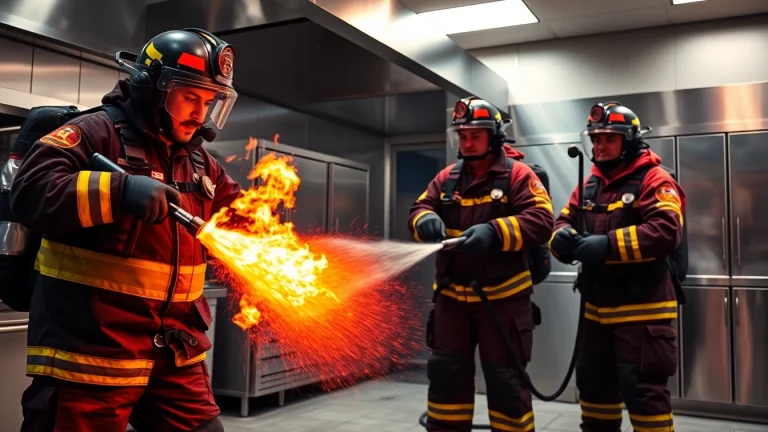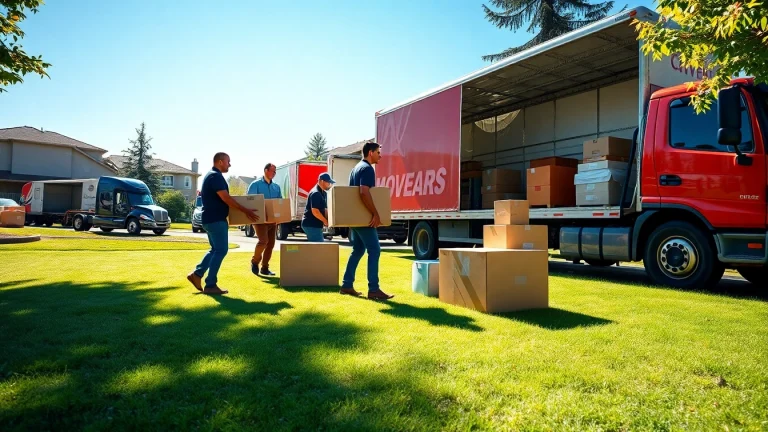
Essential Fire Suppression Service Techniques for Commercial Kitchens
Understanding the Importance of Fire Suppression Service
Fire suppression service is an essential component of fire safety in various settings, particularly in commercial kitchens where the risk of fire is significantly elevated. The nature of cooking, involving hot oils, flammable equipment, and sometimes hazardous materials, creates a unique environment where effective fire suppression systems are crucial. Ensuring that you have a robust Fire Suppression service not only helps in mitigating risks but also enhances overall safety and compliance with legal obligations.
Fire Risks in Commercial Kitchens
Commercial kitchens present a myriad of fire hazards that can quickly escalate into dangerous situations. The high heat from grills, ovens, and fryers generates hot surfaces that can ignite nearby combustible materials, including grease, paper, and linens. Moreover, grease buildup on exhaust systems significantly increases the likelihood of fire. According to the National Fire Protection Association (NFPA), cooking equipment is the leading cause of restaurant fires, accounting for 62% of these incidents. Furthermore, the chaotic environment of a busy kitchen often leads to human errors, which can further compromise safety.
Consequences of Ignoring Fire Safety
Neglecting fire safety measures can have dire consequences that extend beyond property damage. Firstly, the immediate threat to life is paramount; fires can escalate rapidly, endangering the lives of employees and customers alike. Secondly, the financial ramifications can be considerable. A fire can lead to extensive property damage, loss of inventory, and costly repairs, also impacting business continuity. Insurance claims may cover some losses, but policy limits can leave businesses vulnerable. Lastly, there’s the risk to a company’s reputation. News of a fire incident can deter customers and stakeholders, harming the business’s viability in the long run.
Legal Requirements and Compliance
Compliance with fire safety regulations is not just advisable; it is mandatory. The Occupational Safety and Health Administration (OSHA) outlines specific guidelines for fire safety in the workplace, which business owners must adhere to. These regulations include proper installation, maintenance, and inspection of fire suppression systems. Failure to comply can lead to significant penalties and legal liabilities. Additionally, local fire codes often stipulate further requirements specific to residential and commercial kitchens, emphasizing the necessity for an effective fire suppression system.
Types of Fire Suppression Systems
Wet Chemical Fire Suppression Systems
Wet chemical fire suppression systems are specifically designed for commercial kitchens using cooking oils and fats. They utilize a mixture of water and a specific extinguishing agent that reacts chemically to cool down flames and prevent re-ignition. These systems are automatically triggered or can be activated manually, providing rapid response to kitchen fires. The effectiveness of wet chemical systems lies in their ability to create a soap-like foam that smothers flames, reducing fire spread and damage.
Dry Chemical Fire Suppression Systems
Dry chemical systems deploy powdered extinguishing agents, such as monoammonium phosphate, to combat fires. They are suitable for a variety of fire classes and are particularly effective against grease fires. Dry chemical systems are often used in environments requiring rapid response to minimize damage and ensure safety. The versatility and speed at which dry chemical systems act make them popular choices for many commercial kitchens.
Automatic Fire Suppression Systems
Automatic fire suppression systems offer a proactive approach to fire safety. These systems are designed to detect heat, smoke, or flames and automatically discharge firefighting agents without manual intervention. This swift response can significantly mitigate damage and enhance safety. Integration with fire alarms and sprinkler systems further boosts their effectiveness, providing a comprehensive fire response strategy throughout the facility.
Key Components of Fire Suppression Service
Equipment used in Fire Suppression
To effectively combat kitchen fires, several key pieces of equipment are employed as part of the overall fire suppression service. This often includes extinguishers, fire blankets, hood systems, and piping networks. Extinguishers should be readily accessible and appropriately rated for the types of fires likely to occur. Fire blankets provide an excellent means for smothering flames in their early stages. Hood systems play a crucial role in capturing grease-laden vapors and preventing fires from spreading within the kitchen environment.
Maintenance and Inspection Protocols
Regular maintenance and inspections are critical to ensuring fire suppression systems are fully operational. Scheduled inspections allow for the identification of potential deficiencies or deterioration of the equipment. Most regulations require that fire suppression systems undergo inspection at least once a year, though monthly checks can further enhance safety. Keep thorough records of all maintenance activities, as these can be crucial for compliance with legal requirements and for insurance purposes.
Training and Certification for Staff
Employee training in fire safety procedures is an indispensable element of fire suppression service. Staff should not only understand how to operate fire suppression equipment but also be familiar with emergency protocols and evacuation routes. Regular training sessions and certification can keep employees prepared for real-world scenarios. By creating an environment where fire safety is a shared responsibility, organizations can significantly reduce the risk of fire-related incidents.
Best Practices for Implementing Fire Suppression Service
Conducting a Fire Risk Assessment
Conducting a fire risk assessment is the foundation of an effective fire suppression strategy. This process involves identifying potential fire hazards, assessing the likelihood of their occurrence, and evaluating the potential consequences should a fire break out. By engaging with professional fire safety experts, organizations can develop a thorough understanding of their unique fire risks and create tailored solutions for their specific needs.
Developing an Emergency Response Plan
An emergency response plan outlines the steps to be taken in case of a fire incident, detailing communication protocols, evacuation routes, and designated responsibilities. The plan should be clear and accessible to all employees, ensuring that everyone knows their role during a fire emergency. Regularly updating and testing this plan is crucial to accommodate changes in the kitchen layout or employee roles.
Regular Drills and Employee Training
Practicing evacuation drills ensures that employees are familiar with emergency protocols and helps identify any weaknesses in the emergency response plan. These drills should be conducted regularly, simulating various fire scenarios to adequately prepare staff for potential emergencies. Coupling these drills with training sessions that reinforce the proper use of fire suppression equipment can significantly improve readiness and response efficiency.
Measuring the Effectiveness of Fire Suppression Service
Performance Metrics to Consider
To ascertain the effectiveness of fire suppression service, businesses should adopt various performance metrics. These may include response time to fire incidents, compliance rates during inspections, and the number of incidents occurring in the kitchen. Monitoring these metrics helps organizations identify areas for improvement and ensures that fire safety measures are effectively protecting personnel and property.
Continuous Improvement Strategies
Continuous improvement in fire safety requires ongoing evaluation and adaptation of fire suppression strategies. Regular feedback from employees about the fire safety practices and equipment can lead to valuable insights. Conducting post-incident reviews can uncover any gaps in preparedness and lead to revisions of training and equipment protocols, ensuring that safety measures evolve with the changing nature of the kitchen environment.
Feedback and Incident Reporting Systems
Establishing a robust feedback and incident reporting system enables businesses to learn from both near-misses and actual incidents. This proactive approach fosters a culture where employee input is valued and taken into account when making safety decisions. By analyzing incident reports, organizations can pinpoint recurring issues, adjust practice areas, and refine training to enhance overall fire safety.


